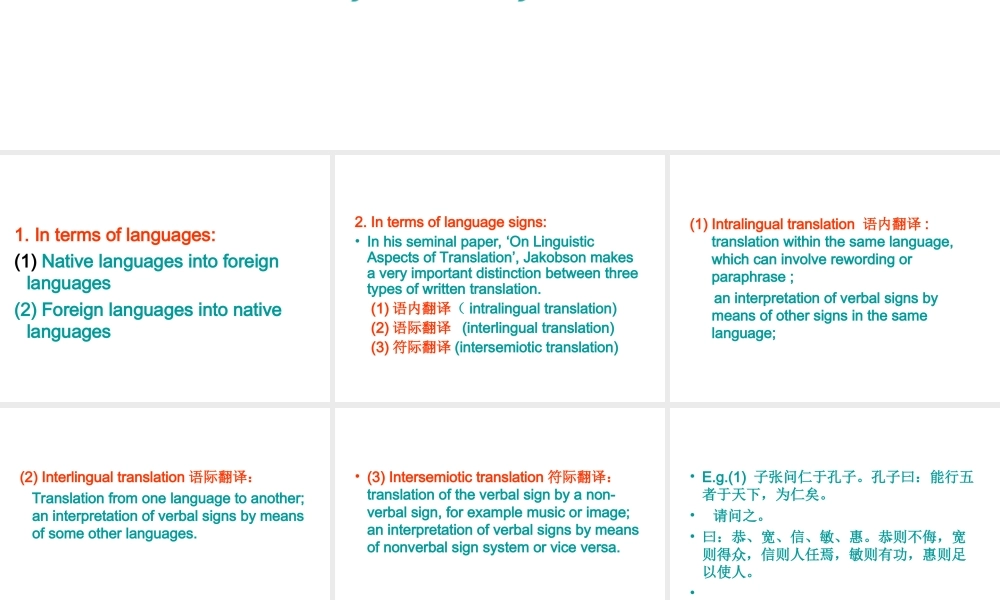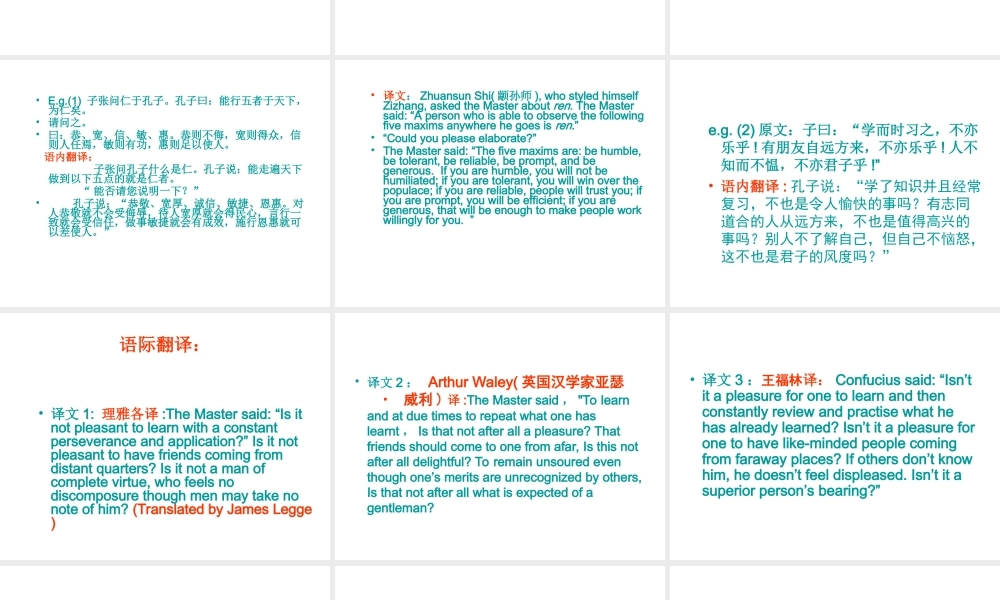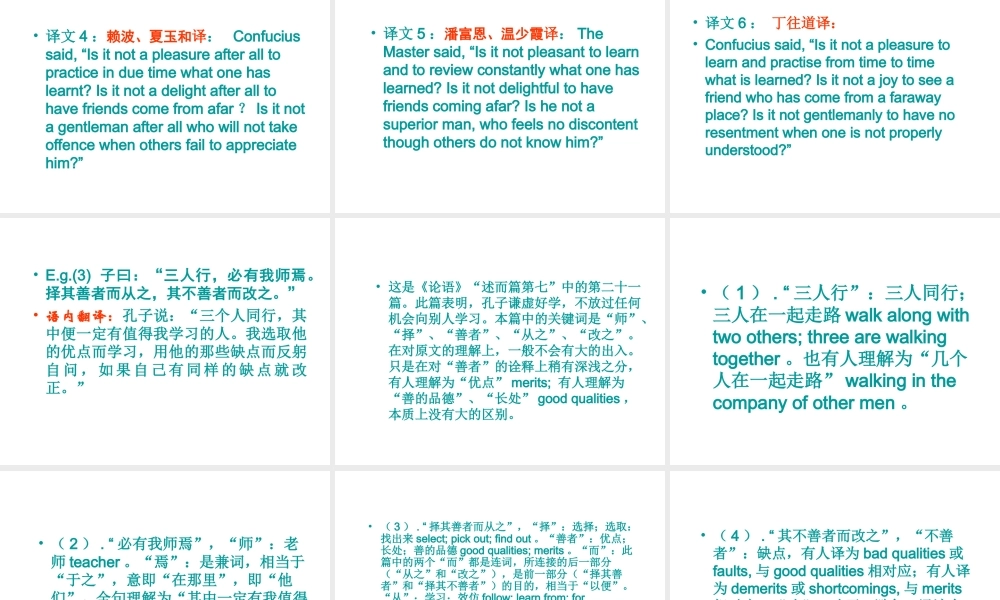Chapter OneUnit 2Classification of Translation 1. In terms of languages:(1) Native languages into foreign languages(2) Foreign languages into native languages 2. In terms of language signs:• In his seminal paper, ‘On Linguistic Aspects of Translation’, Jakobson makes a very important distinction between three types of written translation. (1) 语内翻译( intralingual translation) (2) 语际翻译 (interlingual translation) (3) 符际翻译 (intersemiotic translation) (1) Intralingual translation 语内翻译 : translation within the same language, which can involve rewording or paraphrase ; an interpretation of verbal signs by means of other signs in the same language; (2) Interlingual translation 语际翻译: Translation from one language to another; an interpretation of verbal signs by means of some other languages. • (3) Intersemiotic translation 符际翻译:translation of the verbal sign by a non-verbal sign, for example music or image; an interpretation of verbal signs by means of nonverbal sign system or vice versa. • E.g.(1) 子张问仁于孔子。孔子曰:能行五者于天下,为仁矣。• 请问之。• 曰:恭、宽、信、敏、惠。恭则不侮,宽则得众,信则人任焉,敏则有功,惠则足以使人。• • E.g.(1) 子张问仁于孔子。孔子曰:能行五者于天下,为仁矣。• 请问之。• 曰:恭、宽、信、敏、惠。恭则不侮,宽则得众,信则人任焉,敏则有功,惠则足以使人。 语内翻译: 子张问孔子什么是仁。孔子说:能走遍天下做到以下五点的就是仁者。 “ 能否请您说明一下?”• 孔子说:“恭敬、宽厚、诚信、敏捷、恩惠。对人恭敬就不会受侮辱,待人宽厚就会得民心,言行一致就会受信任,做事敏捷就会有成效,施行恩惠就可以差使人。” • 译文: Zhuansun Shi( 颛孙师 ), who styled himself Zizhang, asked the Master about ren. The Master said: “A person who is able to observe the following five maxims anywhere he goes is ren.”• “Could you please elabo...




